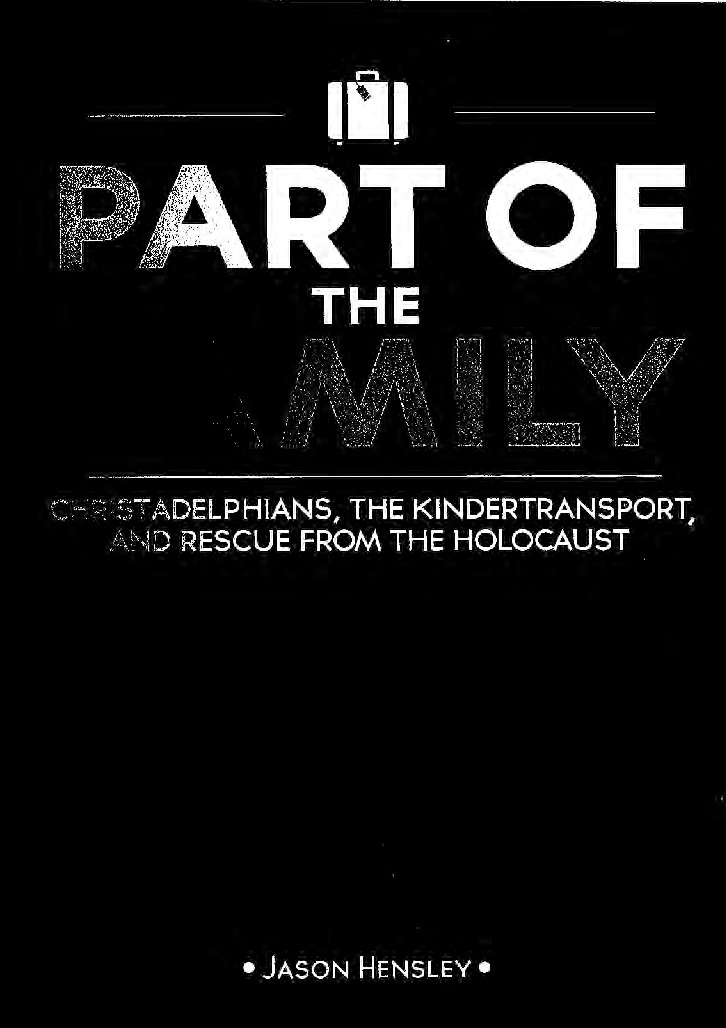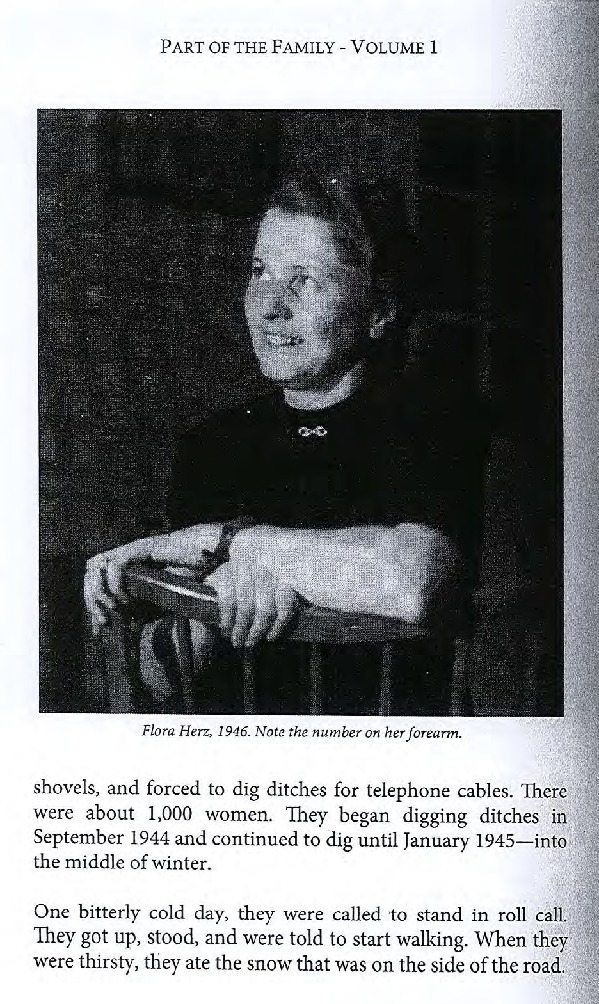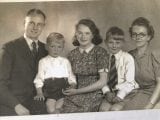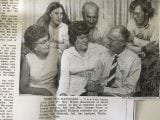- Local Survivor registry
- SUSE ROSENSTOCK
- Local Survivor registry
- SUSE ROSENSTOCK
Survivor Profile
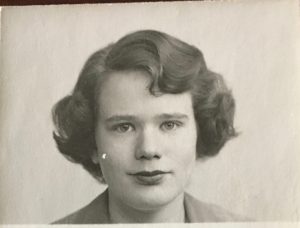
SUSE
ROSENSTOCK
(1931 - 2002)
PRE-WAR NAME:
SUSE MARGOT HERZ
SUSE MARGOT HERZ
PLACE OF BIRTH:
WORMS, GERMANY
WORMS, GERMANY
DATE OF BIRTH:
MAY 6, 1931
MAY 6, 1931
LOCATION(s) BEFORE THE WAR:
WORMS, GERMANY
WORMS, GERMANY
LOCATION(s) DURING THE WAR:
COVENTRY, ENGLAND; BIRMINGHAM, ENGLAND
COVENTRY, ENGLAND; BIRMINGHAM, ENGLAND
STATUS:
CHILD SURVIVOR; KINDERTRANSPORT
CHILD SURVIVOR; KINDERTRANSPORT
RELATED PERSON(S):
WALTER BRUNO ROSENSTOCK - Spouse (Deceased),
EDITH LUCAS PAGELSON, sister ,
DEBORAH ANN ROSENSTOCK - Daughter,
ALAN M. ROSENSTOCK - Son,
ELAINE ROSENSTOCK PEIZER - Daughter,
ROSS E. PEIZER - Grandson,
LARISSA PEIZER - Granddaughter,
MAX A. ROSENSTOCK - Grandson,
SAM R. ROSENSTOCK - Grandson,
ALBERT HERZ - Father (Deceased),
FLORA HERZ - Mother (Deceased)
-
BIOGRAPHY ADAPTED BY NANCY GORRELL
Biography adapted from Part of the Family: Christadelphians, The Kindertransport, and Rescue From The Holocaust by Jason Hensley
“Such was the life saved when, on a day in 1939, a Christadelphian family in Coventry, opened their home to a little eight year old girl, a girl who became their daughter for the next five years. Perhaps it could be said that it was in fact for the following 62 years, as she always thought of them as her foster parents, and they remembered her as one of their children.”
That foster family was George and Florrie Parry of Coventry, England and that eight-year old girl was Suse Herz who had just left Germany on July 25, 1939 on one of the last transports out of the country. In one month, Great Britain would declare war on Germany. When she boarded the transport, she left her father, Albert, her mother, Flora and her older sister, Edith behind in Worms, not knowing when she would ever see them again. Her mother had hope to send Edith to safety in the United States, by the sponsoring family never wrote back. The family managed to survive in Duisburg until 1940, when all the Jews were forced to live in one area of the city. By July 1942, Albert, Flora and Edith were deported from Duisburg to Theresienstadt where Albert died of illness on October 2nd at the age of 53. Flora and Edith continued to survive in Theresienstadt for two more years and then in mid 1944 where transported to Auschwitz. Edith was 17 and Flora 42. The miraculous escaped death and in July were transported for work detail to Stutthof. They dug ditches and were finally liberated in January 1945.
During that time, Suse had been shepherded from the boat by Christadelphians and given for adoption to a young couple, the Parry’s who treated her like family. According to Deborah Rosenstock, Suse’s daughter, “My mother’s stay with the Parrys was wonderful from what my mother shared with me. They took care of her, loved her like a daughter, provided the best they could and made her feel part of the family.” They let Albert and Flora know by letter where Suse was and asked permission of them to take her to Sunday school.” Deborah Rosenstock explains why it was important for her mother to attend: “They never attempted to change her religion, and Aunt Florrie even asked my grandparents in a letter if they would be ok if my mom attended Church with them so she could be part of the family.” They didn’t want to exclude her but they wanted her to know her heritage. “They were concerned that she fit in…never trying to convert her in any way, but to maintain her Judaism. When they could, they got together with other Jewish children.”
Nevertheless, Suse did experience difficult times. When Britain declared war on Germany, neighbors had to be quelled she wasn’t a German spy, and she wasn’t able to correspond with her parents anymore. Her travel on the Kindertransport was frightening, and although she didn’t know it until after the war, she would never see her father again. Life was difficult during the war in England with food shortages and rationing and the devastating Nazi bombing of Coventry. But Suse had her own room with the Parrys. In 1944 when the Allies invaded Normandy, Suse became especially anxious: would she ever see her parents again? Shortly thereafter, she received a telegram. While in the camps, her mother was able to communicate with a great aunt in Switzerland who telegrammed “Having good news from your mother; very happy alright if possible inform Alice.” Alice was Flora’s sister who escaped Europe before the war broke out. She emigrated from Germany to New York.
At the end of 1944, Suse was notified by a refugee committee that she was to move to a Jewish hostel and had to leave the Parrys. Neither Suse nor the Parrys like this decision, but there was nothing they could do. They took a family portrait before Suse left ( Refer to Related Media for portrait). Suse lived in the Jewish hostel in Birmingham with 27 other Kindertransport kinder. According to Suse’s own testimony, “It was a terrible experience…the woman who was my boss was a mean person…the hostel took some of the money I made, and I kept very little…I was supposed to take care of myself, but it was barely enough.” Nevertheless, Suse did appreciate being with other Jewish youth. She began attending synagogue and she felt camaraderie with a number of women. Ultimately, with the Parry’s help, Suse got the miraculous news that her mother and sister survived. They had left Poland and were back in Germany hoping to reunite with her through the Parry’s. But before seeing her mother and sister again, Suse was granted a visa to move to the United States to live with her Aunt Alice. Suse came to New York on May 14, 1946. Nine months later, her mother and sister came to join her—permanently. They were reunited on February 11, 1947 at the New York harbor after eight years apart. Suse describes the reunion:
“It was an incredible moment. I jumped over a barrier to the pier…I have no idea how I did, and I ran down the pier to greet them…My sister and I are extremely close. My mother lived to see my grandson, her great grandson before she died. She did what she could to save her family, and she deserves an awful lot of credit for that. It’s not easy to send a child away.”
After their reunion, Suse, Edith and Flora lived in New York. There, Suse met Walter Rosenstock, whom she married in 1950. They had three children: Elaine, Alan and Deborah and four grandchildren. They were happily married for over 50 years until her death in 2002. Suse never forgot her past. She also never considered herself a survivor, but eventually, decades later, she began to openly tell her story in schools and synagogues. She stood up and thanked the Christadelphians for “being so generous with us refugees.” Over the years the Parrys and the Rosenstocks visited each other on a number of occasions. Suse was an active member in her synagogue, Congregation B’nai Tivah in North Brunswick, New Jersey. When Suse Rosenstock passed away, 400 people attended her funeral according to the South Brunswick Post whose lead was “Synagogue mourns its Matriarch.” She was beloved by all who knew her.
-
SURVIVOR INTERVIEW:
Refer to the Biography above and Related Textual Material below
-
related textual material:

SUSE ROSENSTOCK: PART OF THE FAMILY #1

SUSE ROSENSTOCK: PART OF THE FAMILY #2
-
Sources and Credits:
Credits:
Biography by Nancy Gorrell adapted from Jason Hensley, tPart of the Family: Christadelphians, the Kindertransport, and Rescue from the Holocaus: Vol.1, Chapter 9 “Suse Rosenstock” (2016); “Synagogue mourns its Matriarch,” South Brunswick Post in Related Textual Materials and Obituary: “Suse Rosenstock, 1931-2002, South Brunswick Post)
The Holocaust Memorial and Education Center gratefully acknowledges donation of Jason Hensley’s Part of the Family and digital and historic photographs and documents therein by Deborah Rosenstock and family.


